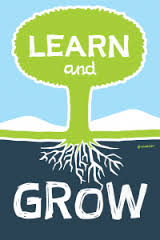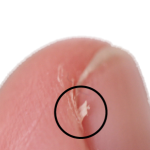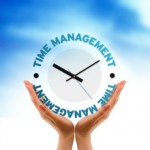 A new year with a new calendar makes for a new chance to grow in your practice. As 2015 winds down, it offers all of us an opportunity to look back over the year and take stock of what we have accomplished, where our challenges lie, and how we can improve over the coming year.
A new year with a new calendar makes for a new chance to grow in your practice. As 2015 winds down, it offers all of us an opportunity to look back over the year and take stock of what we have accomplished, where our challenges lie, and how we can improve over the coming year.
Sure, we all know that we want to be good at our job—not to mention successful. But, what does that mean for you? Take a few minutes to consider the quality of your clients’ experience at your hands, and see if some goals or resolutions for 2016 reveal themselves.
Of course, you’ll want to consider the quality of massage that you offer:
• Beginning with the first touch
• Massaging the full muscle
• Setting the right speed
• Keeping your skills fresh
Beyond your touch, there’s your massage space and the feeling & atmosphere that you create:
• Maintaining your massage room
• Managing music
The empathy you give and your clients’ sense of connection with you are part of it, too:
• Empowering client communication
• Creating space for clients to speak up
• Clarifying their real needs
• Even on bad days
All of those, together with getting great results for your clients and having a positive effect on their well-being, contribute to a sense of being “good” at what you do. Being “successful” can be as simple as enjoying that effect, knowing that you’ve benefited your clients. It can also be a matter of keeping busy and growing your clientele so that you get to keep enjoying having that kind of positive influence on people’s lives:
• Inviting clients to return
• Seeking referrals
However you choose to measure your performance and satisfaction, we hope these best practices, shared courtesy of Dreamclinic Massage, will present new opportunities for growth and development in 2016.


 Holiday fuss can so easily intrude on your practice. In all the hustle and bustle of places to be and errands to run, it can be easy to skip your simple self-care. After all, you had to use your lunch break to run to that one shop for that special gift, right? It’s important to know, that when you do self-skimp, it shows. Clients can not only tell, but they can feel, when something in you isn’t wholly stable.
Holiday fuss can so easily intrude on your practice. In all the hustle and bustle of places to be and errands to run, it can be easy to skip your simple self-care. After all, you had to use your lunch break to run to that one shop for that special gift, right? It’s important to know, that when you do self-skimp, it shows. Clients can not only tell, but they can feel, when something in you isn’t wholly stable. Beware the dreaded hangnail that subtly, but painfully lacerates an invisible path through your client’s skin! Of course, we’ve heard about it, or maybe even experienced it (ouch!), but no it’s never happened to us; we’ve never been the perpetrator of the hangnail crime. At least, we think we haven’t..
Beware the dreaded hangnail that subtly, but painfully lacerates an invisible path through your client’s skin! Of course, we’ve heard about it, or maybe even experienced it (ouch!), but no it’s never happened to us; we’ve never been the perpetrator of the hangnail crime. At least, we think we haven’t.. Massage therapy can be a very fulfilling career, but it can unfortunately end up being a short one for many of us. That’s because certain energetic self-care is absolutely indispensable, but often overlooked. Most of us who practice massage find a way to mind our body dynamics, but do we take care to maintain good hygiene needed to keep our ‘energetic field’ clean?
Massage therapy can be a very fulfilling career, but it can unfortunately end up being a short one for many of us. That’s because certain energetic self-care is absolutely indispensable, but often overlooked. Most of us who practice massage find a way to mind our body dynamics, but do we take care to maintain good hygiene needed to keep our ‘energetic field’ clean? One of the most challenging things for a lot of therapists can be finding themselves in an intake with a new client where the connection just isn’t happening. Maybe they look at their shoes the whole time, or they’re sighing and looking out the window. You know, no click. It takes a real dedication to our profession, and a certain level of maturity, to be able to put that non-clicking, or non-connectedness, aside and still provide somebody with a thorough and caring intake to craft a massage plan that meets their needs.
One of the most challenging things for a lot of therapists can be finding themselves in an intake with a new client where the connection just isn’t happening. Maybe they look at their shoes the whole time, or they’re sighing and looking out the window. You know, no click. It takes a real dedication to our profession, and a certain level of maturity, to be able to put that non-clicking, or non-connectedness, aside and still provide somebody with a thorough and caring intake to craft a massage plan that meets their needs. Are you looking to build your client base? When you already have some happy clients returning to see you, but you still have lots of empty slots in your appointment book, the best way to fill those empty slots is through the slots that are already filled. One of the easiest, but most overlooked marketing tips of all is to turn to those clients who are already coming to see you.
Are you looking to build your client base? When you already have some happy clients returning to see you, but you still have lots of empty slots in your appointment book, the best way to fill those empty slots is through the slots that are already filled. One of the easiest, but most overlooked marketing tips of all is to turn to those clients who are already coming to see you.
 Clients can seek massage for stress relief and relaxation, or for therapeutic work on a specific problem. Sometimes a client with an acute problem comes for general relaxation and stress relief. You can’t assume that just because they have a chronic issue that that’s always why they’re there.
Clients can seek massage for stress relief and relaxation, or for therapeutic work on a specific problem. Sometimes a client with an acute problem comes for general relaxation and stress relief. You can’t assume that just because they have a chronic issue that that’s always why they’re there. In today’s digital age, with so many of our clients (and ourselves!) spending so much time hunched around our smartphones, curled up with our tablets, and bent over our laptops, a new syndrome, which I call “computeritis,” seems endemic. It may be common for massage therapists once they hear of a client’s heavy use of such devices to jump to conclusions as to the culprit of the client’s pain. It’s important that ‘Computeritis” not be our first or only assumption when a client presents with neck or shoulder pain and tension. It’s vital that we get a fuller picture of our client’s lifestyle, without which we could very well be assuming and jumping to incorrect conclusions and to an incorrect treatment approach.
In today’s digital age, with so many of our clients (and ourselves!) spending so much time hunched around our smartphones, curled up with our tablets, and bent over our laptops, a new syndrome, which I call “computeritis,” seems endemic. It may be common for massage therapists once they hear of a client’s heavy use of such devices to jump to conclusions as to the culprit of the client’s pain. It’s important that ‘Computeritis” not be our first or only assumption when a client presents with neck or shoulder pain and tension. It’s vital that we get a fuller picture of our client’s lifestyle, without which we could very well be assuming and jumping to incorrect conclusions and to an incorrect treatment approach.